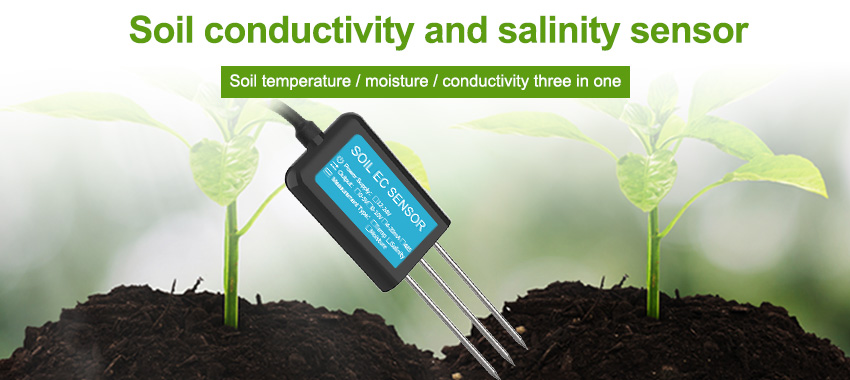Soil sensors are innovative tools that have revolutionized the way we monitor and manage soil conditions in various fields, including agriculture, environmental science, and construction. These sensors are designed to measure soil parameters such as moisture content, temperature, salinity, and nutrient levels. In this article, we will explore how soil sensors are used in the field and discuss their applications and benefits.

Agriculture:
In the agricultural industry, soil sensors play a crucial role in optimizing crop production and reducing water and fertilizer use. By providing accurate and real-time data on soil moisture levels, farmers can make informed decisions on irrigation scheduling. This helps prevent over- or under-irrigation, leading to water savings and improved crop yields. Soil sensors can also measure soil temperature, allowing farmers to determine optimal planting times and monitor soil health. Additionally, nutrient sensors can provide information on soil nutrient levels, enabling farmers to apply fertilizers more efficiently and reduce nutrient runoff, minimizing environmental impact.
Environmental Science:
Soil sensors are widely used in environmental science for research purposes, ecosystem monitoring, and conservation efforts. Scientists use soil sensors to study soil properties and understand the impacts of environmental factors on soil health. They can assess soil moisture levels to better understand water availability in ecosystems and monitor changes in soil moisture over time. This data is essential for studying the effects of climate change on ecosystems and predicting drought conditions. Soil sensors also help identify areas at risk of erosion or soil degradation, allowing for proactive measures to protect soil quality and prevent land degradation.
Construction:
In the construction industry, soil sensors are employed to assess soil stability and suitability for building structures. These sensors can measure soil moisture levels and assess compaction to determine the load-bearing capacity of the soil. This information is crucial in designing and constructing foundations and ensuring the long-term stability and safety of structures. Soil sensors can also measure soil settlement and identify areas of potential soil movement or subsidence, providing early warnings and allowing for preventive measures.
Sports Field Maintenance:
Soil sensors are increasingly used in sports field maintenance to ensure optimal playing conditions and turf health. By monitoring soil moisture levels, sports field managers can determine irrigation requirements and prevent waterlogging or drought stress. Soil sensors can also measure soil temperature, allowing managers to adjust turf management practices accordingly. Additionally, nutrient sensors are used to assess soil fertility and guide fertilizer applications, ensuring healthy turf growth and minimizing environmental impact.
Research and Education:
Soil sensors are valuable tools for research and education purposes. They allow researchers and students to collect accurate and reliable data on soil conditions, enabling scientific studies and experiments. Soil sensors can be used to investigate the impacts of different soil management practices on crop yields, assess the effects of climate change on soil health, and study the interactions between soil and plant nutrients. By incorporating soil sensors into educational programs, students can gain hands-on experience in soil science and understand the importance of soil health for sustainable agriculture and environmental conservation.

In conclusion
soil sensors have revolutionized the way we monitor and manage soil conditions in various fields. From agriculture to environmental science and construction, soil sensors provide valuable information on soil moisture, temperature, salinity, and nutrient levels. By utilizing soil sensor data, farmers can optimize crop production, reduce water and fertilizer use, and minimize environmental impact. In environmental science, soil sensors help researchers study the impacts of climate change on ecosystems and prevent land degradation. In construction, these sensors ensure soil stability and the safety of structures. Soil sensors also play a crucial role in sports field maintenance and provide valuable data for research and educational purposes. Overall, soil sensors have become indispensable tools in the field, contributing to sustainable practices and enhancing our understanding of soil health.